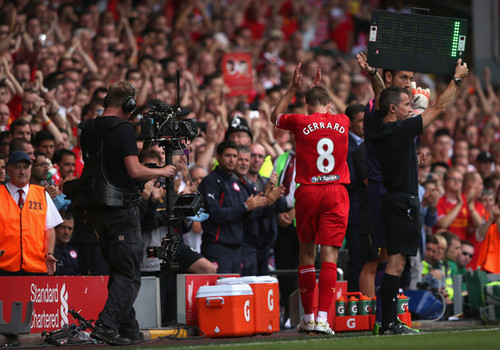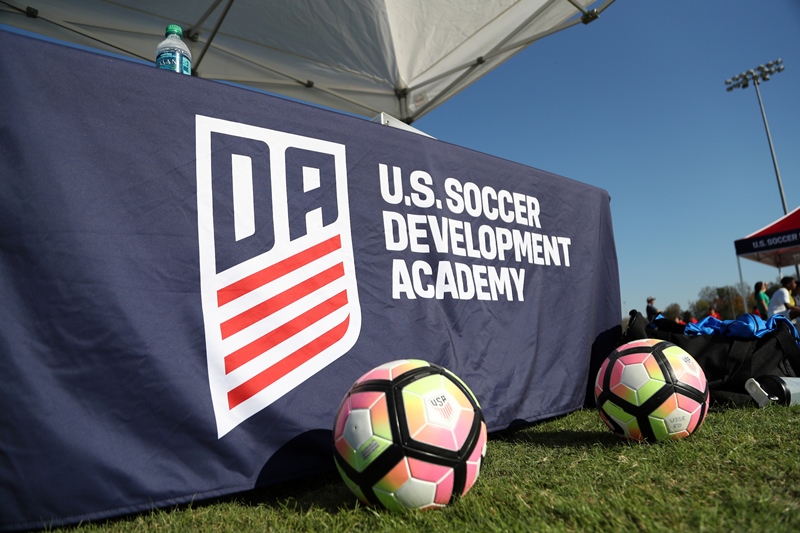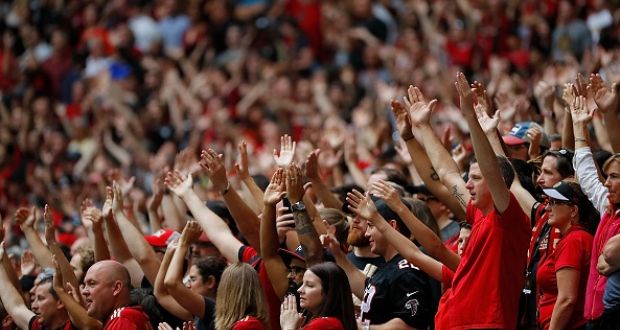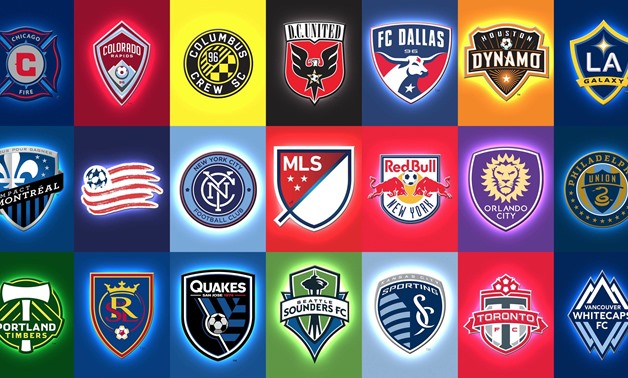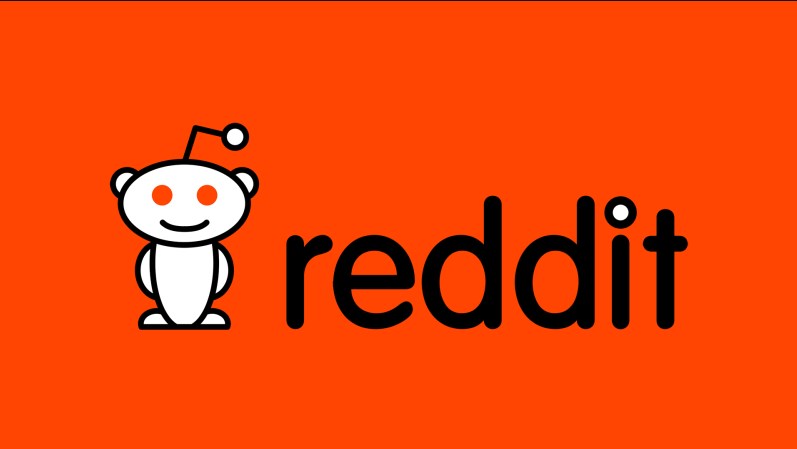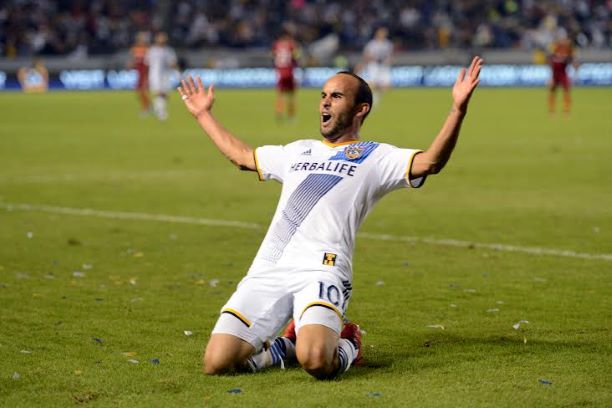The Long Road to Premier League Relapse
The Long Road to Premier League Relapse

The Long Road to Premier League Relapse
By John Ray
Have you ever taken a break with your girlfriend only to get back together? The process begins with a conversation, generally in a neutral location; let’s say a coffee shop, maybe Kayak’s Coffeeshop in Saint Louis, MO. You discuss all the things wrong with your relationship and why you should see other people. One party pleads, begs, and cries to let it go on a little longer, “one more week…this can work,“ but there’s no hope. You’re both released back into the sea from whence you came like baby sea turtles: to return home if fate commands it.
Now you’re back on the open market dating Brazilians and Russians, hitting on 19 and 21 year olds, and having some “friendly” hook-ups. These encounters are alright, but something feels a bit off. The chemistry isn’t there, there’s no attachment, and the thrill is gone. A rebound sounded nice, but it just made you realize how much you missed your girlfriend and the familiarity that comes with knowledge of the intricacies of each other’s lives.
Right, that’s kind of what my summer was like. And how I missed you Premier League. It’s like old times again: Wayne Rooney wants out, Real Madrid are tapping someone up, and Arsenal have been linked to big name players that they are almost certainly not going to sign (David Moyes, feeling jealous, is doing his best impersonation). But not everything is the same. There’s some new furniture your apartment, your wine cellars been emptied, and everything seems a bit more Welsh.
To breakdown the comings and the goings I’ll be sharing my projected table and some words about what we should expect from this season.
The Title Contenders
1. Chelsea: The special one is back and supporters have, predictably, been overwhelmingly positive with reactions ranging from “we’re going to win everything” to “I hate Rafa.”
It’s easy (and fun) to make light of Chelsea’s lack of history, but their future portends to be unbelievably bright with the club’s talented core of players under the age of 25 and a manager set to harness their talents for a long time to come (or be sacked by the end of the season). Mata, Oscar and Hazard are as creative and skillful as any other trio in the league, and the added depth of De Bruyne, Van Ginkel and Schurrle should help keep them energized and fit throughout the course of the season.
The main question mark for the squad is at striker. Will Mourinho’s hand be forced to field a misfiring Fernando Torres or will he give Romelu Lukaku a chance to cement a first-team role at such an early age? Will there be a dreamy Samuel Eto’o reunion? Will Wayne Rooney’s hairplugs make an improbable appearance? The answer to these questions will likely determine if Chelsea will be hoisting the Premier League trophy at the end of the season.
2. Manchester City: Roberto Mancini and his overly pragmatic approach have been banished by the Sheikhs that be and replaced by the Chilean flair of Manuel Pelligrini. While it is nice to know that Pelligrini won’t be fielding a midfield three of Gareth Barry, Nigel de Jong, and Yaya Toure, there is an elephant in the room, which is that he hasn’t ever actually won anything since he topped the Argentinian First Division with River Plate in 2003. I guess he’s won some Mickey Mouse trophy called the Inter-toto Cup, but I’m pretty sure it’s made up. Pelligrini is expected to roll out the typical 4-3-3 and 4-2-3-1 and, if he’s frisky, try some other stuff too, but the idea is to play sharp incisive attacking football while still being strong at the back. The good news for City fans is that the man can manage in Europe: He’s taken two middling sides, Malaga and Villareal, deep into the Champions league.
The “holistic football” approach, which has generated much fellation from transfer aficionados, has brought in a manager from the Spanish league, two Spanish attackers (Negredo and Navas), a Montenegrin second-striker (Jovetic), and a Brazilian center midfielder (Fernandinho), all of whom encourage a cultured passing game. What pushes them above United, in my mind, is that a plan is there. At United there is David Moyes, the legacy of SAF’s wide play, and not much else guiding their decision-making. City, on the other-hand have appointed serious football brains (i.e. Txiki) in key positions of power and assigned them to build a machine that is greater than its components. It’s an admirable approach at the very least.
3. Manchester United: Sir Alex Ferguson’s 26-year reign is over, and he has handpicked another Scot, David Moyes, as his replacement. He allegedly did this by inviting Moyes over to his abode, drinking a load of wine, and asking him “how does it feel to be the new manager of Manchester United” to which he (allegedly) replied “it’s alright innit?”
United’s strength is the same as last season. They have Robin Van Persie, who is in atomic form and has somehow been uninjured for a 12-month period, and attacking talent with varied strengths to surround him and solve opposing defenses.
United’s weakness is also the same as last season. They have an aging CB pairing, a weak midfield with no depth at anchorman, and a squad that, although often greater than the sum of its parts, doesn’t look as good as its competitors on paper. How much of their success was SAF and the mystique, tactical nous, and “don’t disappoint me, or else” attitude that he brought to the club? Moyes’s first season should help us find out. At the very least United supporters will find solace that they’ve spent £1m pounds more than Arsenal this summer.
European Place Contenders
4. Tottenham Hotspur: If you stare into AVB’s eyes long enough you become a little more suave. The Portuguese manager looked to have a Champions League spot sewn last season, but a ridiculous late season run of form from Arsenal left Spurs on the outside looking in. Daniel Levy has, consequently, invested even more money in the squad and banished deadweight like Tom Huddlestone and Clint Dempsey (literally in Huddlestone’s case). That they have, in fact, finally signed a striker is hugely promising and that they signed one as excellent as Valencia’s Roberto Soldado makes it doubly so. Also: a center midfield pairing of Sandro and Paulinho could prove excellent at protecting the back four and taking turns surging forward by the end of the season.
I’m going to stay away from the whole £90m Welshman saga (there’s got to be a joke there), because no matter what happens I’ll look stupid. As long as Spurs have him they’ll be hard to stop.
5. Arsenal: After a disastrous start to last season, Arsenal stormed through the second half of the campaign and dropped only five points in their last 16 matches in order to hoist their fifth Fourth Placed Trophy in the past seven years, an amazing statistic. All this silverware might get to someone’s head, but not Arsene. He’s gone out and targeted some of the best players in world football with names like Luis Gustavo, Gonzalo Higuain, Luis Suarez, and Edin Dzeko being thrown around. And a fit Jack Wilshere is like a new signing.
The hope here is that the reflected glory of the targeted names will appease Arsenal supporters, while they proceed to only bring in South Americans on trial and French teenagers on frees in order to win yet another Profits Cup.
In reality, it’s hard to not envision building off of last season’s platform, performance wise. The Koscienly/Mertersacker pairing is really quite effective at the back, the young guns will continue to mature, and Giroud might continue a bit of the scintillating form that he showed at Montpellier and in the preseason. The reason that I have them fifth is because their progress is merely slower than the four clubs above them.
6. Liverpool: It’s the second season of the Brendan Rodgers project and everything is going according to script, if you’re realistic and think that the Liverpool squad as currently constructed would require a minor miracle to earn a Champions League spot. Barring Suarez, Agger, and, maybe, Coutinho they are worse all around the park than their direct competition and will take one or two more seasons of shrewd business to blossom into a truly frightening side.
Like Manchester City, Liverpool have also tried to bring some Spanish technique: Iago Aspas and Luis Alberto should complement the attacking forces that they already have and ensure that the bite ban does minimal damage at the start of the season. In addition to these incomings, the Dalglish threesome of Charlie Adam, Andy Carroll, and Stewart Downing have all finally been banished from the clubs books and the future looks bright for this relatively young side.
7. Swansea: The more instantiated of the Premier League’s Welsh pair (It’s eerie to say that) won’t have it easy this season. The fixture demands brought by the Europa League have historically taken a toll on sides in the main division and opposing managers seemed to have finally acclimated to their style of play by the end of the season. Laudrup’s system often resembles a 4-1-4-1 when in attack and a 4-2-3-1 when in defense. The five attackers were often neutralized by marking the hub of the team, Michu, out of service with a tight marking three man midfield and using waves of pressing to help expand the size of their generally compact team. Swansea only scored 9 goals in their final 12 matches of the season.
Luckily, the moves they’ve made this summer should be more than enough to offset this stagnation. Wilfried Bony will move Michu back into his preferred second striker role and Bony has the power and pace to open up the channels of space that allow the floating Spainard to have greater influence and freedom of movement. Jonjo Shelvey will add utility midfield depth and an element of chaos to a system that can often produce possession without results when defended correctly. And Pozuelo and Canas should, respectively, add steel in the midfield and guile at the back. Having the players to execute new ideas are as important as the new ideas themselves in the modern game and Swansea’s additions should allow a much greater level of flexibility and rotation in the squad.
“We’re mid-table and we like it!”
8. Everton: I guess? I hate this team. I don’t want to put them here, but there is no one else that seems really able to challenge for their spot. David Moyes is, in my mind, a negative for United, but he was unquestionably a positive for Everton. The MacGyver of the Premier League could turn an Anichebe, Neville, and Coleman into a 6th placed finish and disarm the club’s ticking financial time bomb at the club until the next episode. To replace the ultimate pragmatist and utility man, the Everton board has chosen Roberto Martinez. Martinez is by all accounts a decent to good manager, but he’s also an idealist: a man who places the system above the player and goes for the points when a draw would suffice. I’m all for that kind of football, but I don’t know if swashbuckling possession based stuff will work with the players that Everton can field at the moment, especially if Moyes and United eventually circle back to Fellaini after being rejected by everyone else in transfer market speed dating. Martinez must adapt or die.
9. Aston Villa: The greatest football club in the world has one advantage over the teams that finished around it (15th) last season: There is a plan for success in place. Paul Lambert wants to play fluid, attacking, and team oriented football. Players that detracted from that ethos, like Darren Bent, Barry Bannan, Alan Hutton, and Stephen Ireland, have been condemned to idle in isolated training or engineer a move for themselves away from the club. While Lambert’s treatment of these players may be criticized as harsh, it is a necessary step to change the culture of a club from one of high wages and selfish behavior to one of teamwork and commitment.
The nature of the project, bringing in young and hungry players, has enhanced the attractiveness of the club as the talents that Lambert has brought in are looking to develop in a side that has long-term goals in a short-term footballing world. For instance, highly rated Danish defender Jores Okore turned down a move to Chelsea in order to get first team experience at Villa. And more and more players seem to be chasing a move to the club, with Sochaux’s Ryad Boudebouz one of the latest.
No new signings will change the disappointing performance over the entirety of last season, but their excellent stretch run has augured a promising future for the young team. Lambert’s ideas seemed much easier to execute after the experience of the much-maligned Ron Vlaar returned to the side and the midfield trio of Sylla, Westwood, and Delph became instantiated and allowed for the powerful, high tempo, pressing game that Lambert was trying to install.
P.S. I have no idea how Paul Lambert convinced Christian Benteke to rescind his transfer request and sign a new contract after one day of training, but I am drinking the Kool-aid. That man is a hypnotist.
10. Fulham: Have you ever seen a moustache more glorious? Or a side with more players described as enigmatic? Martin Jol has brought in Adel Taarabt to complement the “floaters” of Bryan Ruiz, Hugo Rodellega, and Dimitar Berbatov (If only they would bring in Darren Bent). I’m of the opinion that Fulham have the components of a good side, but that the components they have don’t necessarily fit in the modern Premier League game. The side is too specialized, with a midfield full of industry and short on technique in Sidwell, Richardson, and Boateng, and a defensive line with a lot of strength and little pace in order to compensate for the lax nature of their creative players.
The lines between attack, midfield, and defense may be too rigid to do any sort of real damage in the Premier League this season, but the quality and experience they have should assure them of a satisfactory midtable finish…not unlike the past 10 seasons.
“We’re pirates out here, just tryina stay afloat” – Rick Ross
11. Southampton: Nigel Adkin’s sacking around New Year last season was met with reproach from both Southampton supporters (who organized a protest) and Premier League neutrals, but, as some have suggested, it might have been a shrewd move to bring in a manager, Mauricio Pochettino, who’s ideas are more closely aligned to the management group’s and can raise the ceiling of the club.
New record signing Victor Wanyama should be a potent addition to a 4-3-3 midfield already consisting of Jack Cork and Morgan Schneiderlin and enable Pochettino to play his high pace pressing game
Ultimately, Southampton’s limitations this season are the same as Villa’s. They are excellent when allowed to sit in defense with a roving pack of midfielders and break out in attack, but lack players with the ideas necessary to unlock equally defensive teams. That responsibility for Southampton largely comes down to Gaston Ramirez and he failed expectations last season. As he goes, so will Soton. They could finish between 9th and 16th.
12. West Ham: Rounding off the “surely midtable” group is West Ham, a team whose style is an obvious homage to the directness and uncompromising physical play of England in the early 90s. Big Sam Allardyce draws considerable ire from neutrals, but his tactical simplicity is his team’s strength. The Hammers will try to get the ball up front to Andy Carroll, out-wide to Matt Jarvis and new signing Stewart Downing, or to Kevin Nolan, who is adept at arriving late in the box to score goals from midfield or set up Carroll.
The side takes a no frills approach to defense and midfield play, evidenced by noted “big lads” Mo Diame, James Collins, and Winston Reid comprising the core of their side and a general lack of the more cultured defender James Tomkins in the side.
It’s interesting how all the teams in the upper-half of the “also-rans” all have clear ideas of how football should be best played. Martinez believes in possession, Pochettino and Lambert believe in the pressing and counter-attacking game, and Jol and Allardyce believe in directness (albeit applied to their sides in different ways, with Big Sam more defensive and Jol more attacking). Planning, at this level, can often differentiate the decent teams from the bad ones.
Any of these teams could get embroiled in the relegation scrap
13. Norwich: Chris Hughton’s team won most of their points at the end of the fall last year and were sitting pretty before getting throw in the relegation fight and, equally improbably, then finishing 11th. This was partially due to simple fluctuations in form, but looking under the hood, the Canaries are absolutely awful away from home and their strength in midfield was squandered by Hughton’s more rigid and direct approach that becomes even more so in periods of poor results.
Going into the new season most of the significant changes have come up-top. Strikers Gary Hooper and Ricky van Wolfswinkel, winger Nathan Redmond, and midfielder Leroy Fer have come in to Hughton’s preferred 4-4-1-1, while former talisman Grant Holt has been exiled to Wigan. The idea here is, obviously, to boost Norwich’s goal tally, which has become increasingly anemic over the past few seasons, but I think the drop in scoring is more a result of Hughton’s defensive tactics than any personnel problems.
As long as Norwich have the technically proficient triumvirate of Jonny Howson, Wes Hoolahan, and Robert Snodgrass, it’s hard to see them doing too poorly, but their defensive frailties, especially away from home, will also prevent them from achieving any semblance of greatness.
14. Cardiff: Don’t Malaysians know that Dragons traditionally eat sheep? The club’s new ownership group has undertaken a rather hilarious rebrand which has seen Cardiff’s shirt color change from blue to red, their shirt sponsor changed to “Malaysia,“ and their crest change from a lovely bluebird to a Welsh Dragon with the motto “Fire & Passion” underneath, which seems more suited to a romance novel than a football club.
On the brighter side of things, those in Cardiff should know that the side looks poised to do quite well in the Premier League. Malky Mackay has assembled a squad full of fitness and instilled a battle-hardened mentality that is embodied by their new signing Gary Medel, a combative Chilean midfielder from Sevilla. Look for him to pick up a few red cards (he had seven during his time in Spain), but also provide the tenacity and protection that a newly promoted side needs in front of their backline.
Also: Mark your calendars for Sunday Nov. 3rd: Welsh people might throw things at each other.
15. Sunderland: Jozy Altidore golden boot odds? 101/1. I’m just saying. There are other things going on here, but the only ones that really matter are Jozy and Paolo. Paolo di Canio’s start to life at the Stadium of Life was both ebullient and capricious (both GRE words) as the Italian had notable highs like the 3-0 Tyne-wear derby victory over Newcastle and notable lows like the 6-1 demolition he received from the mighty Villa.
Since nearly avoiding relegation Di Canio hasn’t changed his tone much. He’s essentially told his players from last season that they weren’t good enough and begged for replacements. Funnily enough he’s gotten a couple good ones in the aforementioned soaring eagle of Jozy Altidore up front and the diminutive and industrial Giaccherini on the left wing. That has left their attacking line to be complemented by Stephane Sessegnon playing off Jozy and Adam Johnson, who really came to life under Di Canio, opposite Giaccherini: formidable on paper.
Unfortunately for Di Canio, there is only so much Jozy can do… the spine of the team, barring the walking red card that is Lee Cattermole, looks a little weak compared to Premier League standard (especially given the reinforcements brought in by their direct competition), and the aging backline is ill-suited to the high tempo attacking game Di Canio favors. The loss of Simon Mignolet to Arsenal might be particularly taxing as his performance in goal won a lot of points for the club and his replacement, former Arsenal keeper Vito Mannone, is unconvincing at best. Look for Sunderland to score a lot of goals this season but concede even more. Di Canio’s tactical ploys were undone by incisive counterattacks at the end of last season and they’ve brought little into the midfield or the defense to change these frailties.
16. West Bromwich Albion: Last year’s top midlands club, surprise special, and general overachiever should expect a bit of harsh reality and regression this year. Steve Clarke has lost his top goal-scorer, Romelu Lukaku, and replaced him with an extremely excited Nicolas Anelka. They haven’t actually spent any money on players this summer and the signings that they have made are on big wages and past their prime. This is a bit befuddling considering that the clubs prior business was pretty sound and there are few inclinations that their performance from last season should be sustainable without incoming quality.
One promising sign is that the partnership of Mulumbu and Yacob, off which all the team’s success is predicated, is still intact and looks fit for the beginning of the season. If Steve Clarke can steer this side above 12th, he will have cemented himself as an excellent manager in my eyes.
17. Newcastle: Only Joe Kinnear could make me forget about a supporter punching a horse. The club’s new old Director of Football has stepped in to shoulder some of the load from Alan Pardew (Alain Pardieu), but has, at time of writing this, signed exactly zero players for a side that only barely avoided the drop last season. I don’t think that Newcastle are that bad in terms of personnel, but they aren’t heading in the right direction and there’s not enough fresh faces or ideas at the club to lead one to believe that they can curtail their poor form.
The squad is built around the invention of Ben Afra, the goalscoring of Sissy, and solid presence of Yohan Kebab in the middle of the park. The Amamobi brothers provide the spark off the bench.
There was no inclination that Mike Ashley actually knew what he was doing. Who offers a manager an 8-year contract? Bringing in Kinnear merely confirmed everything that we knew about him being an overly interventionist owner with little actual football acumen, a deadly combination. Newcastle is positioned at the precipice of the drop, but I have to believe the quality they have in the side (Debuchy, Coloccini, Yanga-Mbiwa, and Santon have the ability to be an excellent back four) should just barely save them.
18. Hull: I’m sorry Steve Bruce…bringing in Tottenham rejects won’t save you, but it will help you finish better than Crystal Palace. Hull City will probably be the most boring team in the league this season as Bruce has preached a result first ethos that will make me want to chug beer and forget every match I suffer through. Staying up is certainly a slog, but doing so without any clear ideas on how to do so other than merely “fighting for every point” has been a kiss of death to clubs in the past.
For what it’s worth, Assem Allam, the club’s owner, has opened up the checkbook this Summer to accommodate some decent reinforcements: Jake Livermore, Tom Huddlestone, Yannick Sagbo, Maynor Figueroa, and Alan McGregor are all capable of playing in the Premier League. For my money, though, the overall squad depth is not of Premier League quality and features too many has-beens that looked marginally effective in previous terms. It’s not that I think Hull will be that bad, but the relegation battle projects to be particularly intense this year and they lack the firepower and the invention to make a significant dent in their neighboring sides.
19. Stoke City: Little America has become a revolving door of big spending Welsh managers who are small on results. Tony Pulis had kept Stoke in the Premier League every season since he led them to promotion in the 2007-2008 season, but that was not enough for the club’s owner, Peter Coates, who sacked Pulis over not achieving the results to match his financial investment in the club. His replacement, Mark Hughes, is also a Welshman and has suffered the same exact criticism that led Pulis to the sack at every stop in his career.
Looking at the team itself, there’s not much there. There’s an inordinate amount of Americans for whatever reason (Brek Shea, Juan Agudelo, Maurice Edu, and Geoff Cameron), but none of them figure to be a major factors. Ryan Shawcross, Jonathan Walters, and Steven N’zonzi are the players I rate most at the club. It’s hard to see them not being absolutely terrible.
20. Crystal Palace: The Eagles might have soared a bit too high last season when their goal scoring came through two main channels, Glenn Murray and Wilfried Zaha. The latter is now a Manchester United player and the former was last spotted in arm crutches after doing in his cruciate. Palace haven’t really brought in anyone of note and their Australian, Fellaini-light, Michael Jedinak, should be a crucial performer this season.
I love Ian Holloway. His press conference antics are one thing, but the way that he approaches football is truly refreshing and I hope that any manager who is similarly earnest in attacking ideology is rewarded with results. Holloway nearly stayed up after trying to scalp every team with a terrible Blackpool side a few seasons ago, but ultimately crashed like Icarus and it’s hard to imagine any other fate for this year’s Palace.
John Ray is a senior writer for A Football Report. You can follow him on twitter at @mynameisjohn and find more of his thoughts on his Tumblr. Comments below please.


